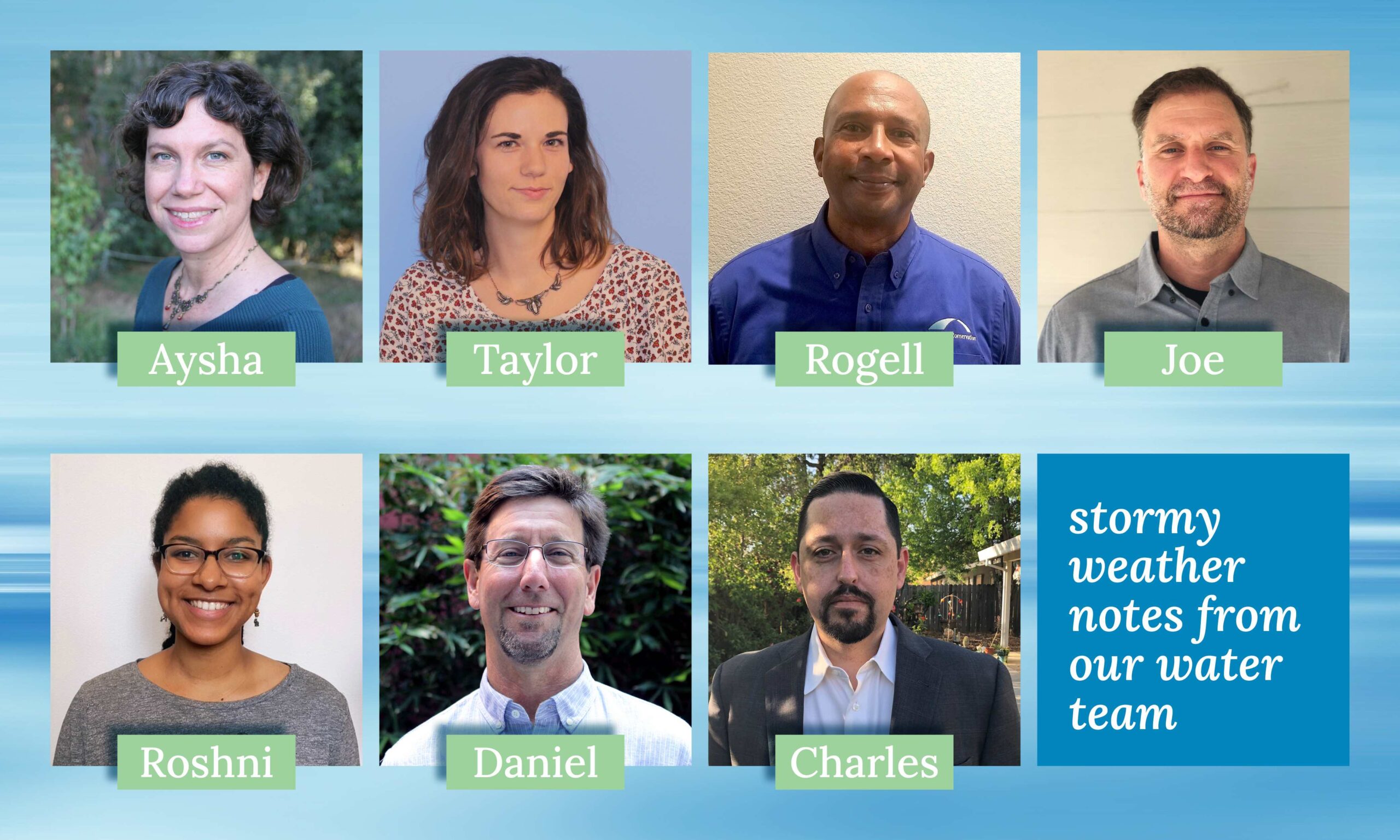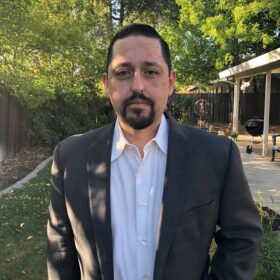
It’s been a tumultuous (and wet!) start to 2023, with California weathering an extraordinary level of rain and snow over the past few weeks. Opportunities abound, but a storm-barraged populace’s frustrations and hazards are clear. Our hearts go out to those that have been impacted by these recent atmospheric events, and we appreciate the chance to center flood risk and community safety in the larger conversations about drought and water security.
We checked in with our Water for the Future team to get a window into our upcoming work, what’s on their minds when it comes to California weather extremes, and their hopes for the future.

“Recent storms are a reminder that even in an exceptional drought, floods can and do happen. We can plan for these inevitable swings by thinking about droughts during times of flood, and floods during times of drought. Flood-MAR is a simple concept that uses flood water to spread out onto land and recharge aquifers – but implementing it requires advance planning. We are very lucky to collaborate with many people, agencies, and organizations working toward making Flood-MAR a standard practice that can potentially reduce flood risk, recharge aquifers, and improve ecosystems.” – Aysha Massell, Water for the Future Program Director

“I think increasing and scaling adoption of recharge practices are both a major challenge and opportunity in California. Not only to protect from drought, but also during the heavy rains that we are seeing. We need to get as much water in the ground as we can to protect from droughts and to shave off peak flows and protect people and communities from flooding. During droughts, it’s hard to collect data on the impacts of recharge; hopefully, as water becomes available for recharge, we will start getting in more data that helps build confidence in the practice. This can also help provide the data points needed to ground-truth our decision-support tools!” – Taylor Broadhead, Project Manager, Water and Dairy Programs

“It’s important to build trust between different people and groups, especially between the farmers and other stakeholders in local watersheds. We provide the technical know-how for how to prepare farms to capture, infiltrate, and record excess surface flows. We facilitate policy goals when we work with the Central Valley irrigation districts and farmers to develop on-farm recharge programs. Our detailed knowledge is important so water managers can build a successful recharge program that supports willing partners.” – Rogell Rogers, Senior Agronomist

“Even with the floods, landslides, and other natural events currently impacting our coastal and inland communities alike, the surge of rain and snow battering our Golden State is hitting at such an important time. Since we began working on groundwater recharge approximately 12 years ago, California has only had 3 ‘wet’ years and far too many ‘critical’ and ‘dry’ years. And this trend of extremes is something we must continue to get used to managing.
Carefully maneuvering the complex landscape of legal, logistical, political, and other factors – and knowing that the next multi-year drought is just around the corner – fuels me to find ways to make an impact that can hopefully address at least a fraction of our thirsty demands.
All of this comes at such an important time because there is so much at stake. Like marginalized communities dependent on groundwater for their drinking water needs and farms whose families are already feeling the impacts of land coming out of production due to over-depleted aquifers. I truly hope people choose to set aside some of their differences and work to do what’s best for all Californians, including the flora and fauna.” – Joseph Choperena, Project Director, Water Resources

“Growing up in California, drought was frequently a topic of conversation. In recent weeks, the elusive rain that we await has filled our skies, land, and waterways.
I am excited about the opportunities that our work with Flood-MAR presents in combatting drought while preventing harmful flooding and providing benefits to communities and ecosystems.” – Roshni Katrak-Adefowora, Data and Science Communication Specialist

“As I lay awake last night hearing the creek-turned-river outside my back door getting louder and louder as the rain pounded down, all I could think of was the importance of diverting flood flows off swollen rivers to protect life and property downstream. The opportunity to achieve significant recharge this year has the bonus of reducing flood peaks. As we calculated in the DWR FloodMAR study for the Merced watershed, with full implementation of recharge programs coupled with reservoir management, climate change induced flood peaks can be reduced by 65%.
I am excited that this can be the year when farmers, irrigation districts, and the state can start to see the need, and use Flood-MAR to adapt to the flood effects of intensifying atmospheric rivers and replenish our drought-induced groundwater depletion. It takes floods to realize California’s recharge potential.” – Daniel Mountjoy, Director of Resource Stewardship

“These storms are an inflection point, really. Our water system as we currently know it, based around the State Water Project and Central Valley Project, was designed in the 1950s and ‘60s for more predictable precipitation patterns, a smaller population, and an overreliance on groundwater. We have to adapt to more frequent and more prolonged droughts, and irregular and intense periods of rain and snowfall.
This is our new climate pattern – or lack thereof. We can work together and modernize our system to recognize this new reality. With the kind of intense storm flows that we’ve seen this month, there is a point where you can divert water for agriculture, preserve environmental flows, and protect downstream communities, and that’s the sweet spot we want to hit.” – Charles Delgado, Policy Director
Learn More
Sustainable Conservation’s in the news! As the media cycle covers flood, drought and frustration, we’re pleased to be able to highlight collaborative solutions that address multiple, critical water needs in California. Check out this recent coverage:
The Modesto Bee: What’s TID doing with storm runoff? Two of Newsom’s Cabinet members visit to see, also featured in the Sacramento Bee
KCRA 3 Sacramento: San Joaquin Valley farmers help replenish groundwater by flooding their fields
Science: Can California’s floods help recharge depleted groundwater supplies?
Agri-Pulse West: California does not track groundwater banking—but projects tapping flood flows show promise
Turlock Journal: Storm runoff offers recharge for drought-ridden farmland
